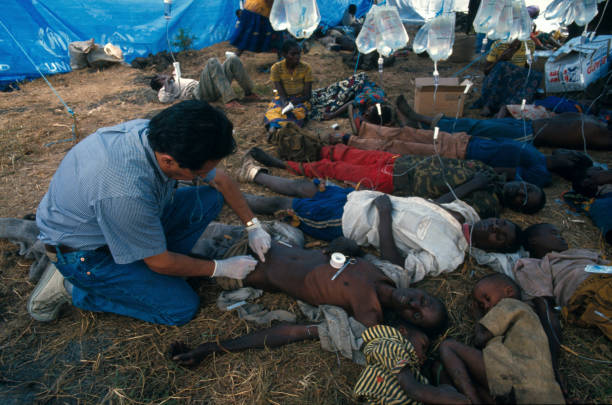Introduction

In continuation of the effervescent joys of sickness and its effect on the world, we go to a pandemic that has a surprisingly high kill and a commonly known pathologic basis: cholera.
It is one disease whose variant presentation made it difficult to determine the potential for its occurrence in certain regions and not others. So far, there are seven known isolated outbreaks of cholera in the past 200 years and a few well-known mild outbreaks. The first documented pandemic occurred in the Bengals of India between 1817-1824, claiming hundreds of thousands of Indians and multiple Brits in the region. Unlike many other pandemics disputes of its origins from the Ganges delta are non-existent. A major reason for cholera’s propagation from India to Europe and the Americas was confusion as to its transmission.
Each pandemic had a different pattern of spread and affected population for the most part. However, all except the seventh originated from India and spread rapidly from there. The first began in 1817 and spread through South East Asia before reaching Europe and the East African Coast. It persisted for a few years before receding to its origins around the Bengal.
Further Pandemics of Cholera
The second outbreak was deeper reaching, penetrating Europe and the Americas and reaching as far as Mexico and Cuba in its travels. Seafare and travels through intercity waterways bore much responsibility for its successful propagation. Beginning in 1829 and subsiding eight years later, its killing spree was nothing compared to the one that followed it.
It wasn’t until the third pandemic, the deadliest one by far, in England that John Snow determined its spread by water. Many years passed before this info was acted on. Cholera had the uncanny ability to present in clustered outbursts of virulence before dying completely after a few years, taking a few tens of thousands with it. Travelers along waterways brought the disease from their homesteads to healthy places. The countries with the highest casualties include India, Russia-where it claimed over 2 million people at a certain time, and even the Americas. It had a penchant for traveling with Muslims on pilgrimage to Mecca, making their physical transcendence to Allah a more vertical and permanent one. In fact, Mecca was a way station for cholera during the worst times of the many pandemics. In addition, its spread into Africa was also a first for the disease.
The fourth and fifth pandemics are less important, albeit with impressive kill counts. The sixth disproportionately affected areas in India, Russia and North Africa with little spread to the Americas and Europe. It spanned nearly a quarter of a century in its duration. The seventh pandemic occured in the 1960’s and was notable for having Africa as an epicenter of new cases. Its origins also differed from the other occurences of this disease.
Conclusion

Cholera is now understood to break out in impoverished, remote regions close to water sources-especially those that have little or no access to clean drinking water. Between 2016 and 2021, the most recent outbreak was once termed the worst humanitarian crisis in Yemen. Cholera’s violent nature on the onset, with sweats, hideous muscle contractions before and after death, and the sheer volume of fluid loss made it a very distasteful illness, and as such, it has little to no mention in literature and popular culture. The fact that it is very treatable and cheap to interrupt means that the incidence of pandemics on a global scale is one that we’re unlikely to ever encounter again.



Leave a Reply